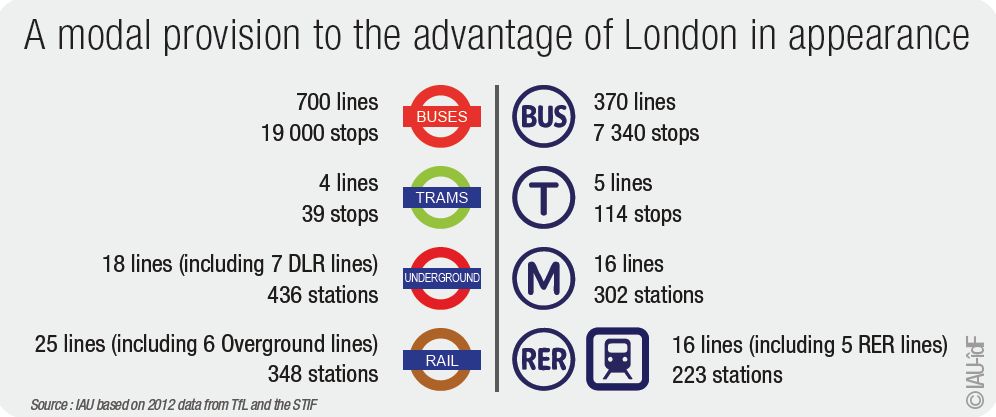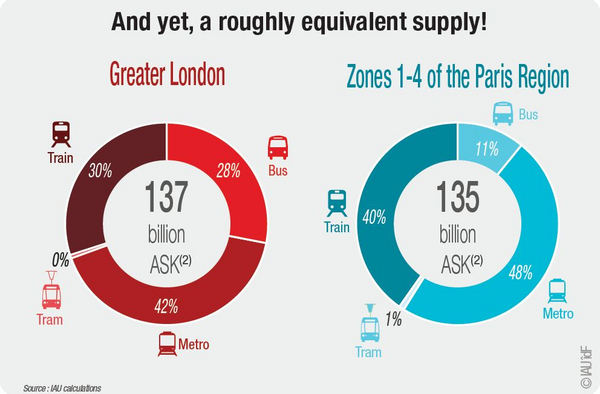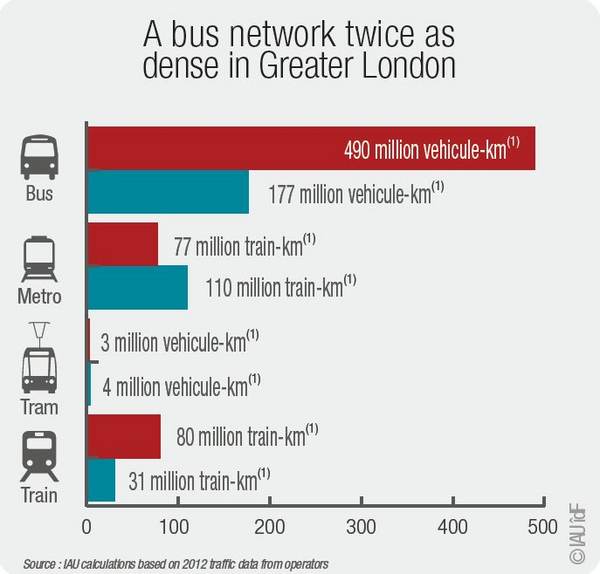Greater London, often considered to be less efficient in terms of public transport infrastructure compared to the Paris Region, is continually improving its network and this trend has accelerated since the preparation of the 2012 Olympic Games. For the first time, their respective public transport provision can be measured precisely using data from operators. Groundbreaking results!
Finding the right perimeter for comparison
If the challenges faced by these two major cities are often similar, their territorial and administrative organizations differ to the point that it is difficult to compare.
The perimeter selected in the Paris Region in comparison with Greater London is that of fare zones 1 to 4 of the transport authority. This perimeter includes the city of Paris and the inner suburb and is contained within the agglomerated area as defined by the French National Institute for Statistics and Economic Studies (INSEE).





